Since the founding of the Will Eisner Comic Industry Awards (and their previous incarnation, the Kirby Awards), the following individuals have been inducted into the Hall of Fame.
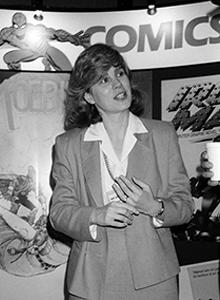
Carol Kalish
1955–1991
Carol Kalish served as direct sales manager and vice president of new product development at Marvel Comics from 1981 to 1991. She is credited with pioneering the comics direct market when it was in its adolescence, in part through a program in which Marvel helped pay for comic book stores to acquire cash registers. Beginning in the mid-1980s, Kalish spearheaded the expansion of Marvel’s distribution into previously unexplored retail outlets, including major bookstores such as B. Daltons and Waldenbooks. In 2010 she was posthumously awarded the first ComicsPRO Industry Appreciation Award.
Inducted 2018
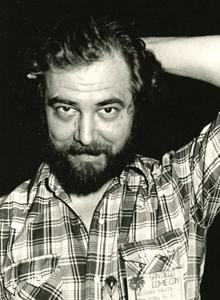
Michael Kaluta
1947–
Artist and illustrator Michael Kaluta is best known for his work on The Shadow and Elaine Lee’s Starstruck and for his cover art. Influenced by art nouveau and the 1930s pulps, he brought a unique look to comics in the 1970s and 1980s. In recent years he has been in demand as a cover artist, including an award-nominated run on DC/Vertigo’s Madame Xanadu.
Inducted 2010
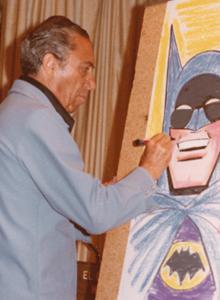
Bob Kane
1915–1998
Bob Kane entered the comic book industry in 1936 as a freelancer for Jerry Iger’s Wow! What a Magazine! At the Eisner-Iger studio, he drew funny animal strips and humor features. His first adventure strip was “Rusty and His Pals” for DC’s Adventure Comics. In 1939 he collaborated with writer Bill Finger to create a new strip for Detective Comics: “The Bat-Man.” The rest is history!
Inducted 1998
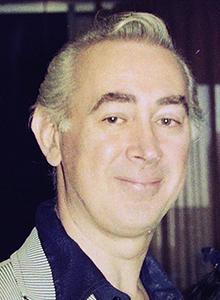
Gil Kane
1926–2000
As a penciller, Gil Kane lent his distinctive style to numerous DC and Marvel titles beginning in the 1950s, including drawing more than 900 covers for Marvel starting in the late 1960s. His work at DC on such titles as Green Lantern and The Atom is highly revered by fans, as is his work at Marvel on Amazing Spider-Man, and many other titles. In the 1970s, he was Marvel’s main cover artist.
Inducted 1997
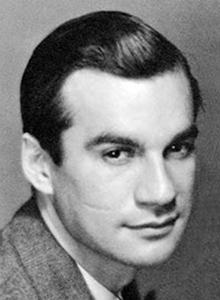
Robert Kanigher
1915–2002
In the mid-1940s Robert Kanigher wrote the Justice Society of America, Hawkman, Green Lantern, and Wonder Woman (which he also edited). In 1952 he took over writing and editing the Big Five DC war titles and created Sgt. Rock, Enemy Ace, and The Unknown Soldier (all with Joe Kubert) and The Haunted Tank (with Russ Heath). In the late 1950s and early 1960s he was involved in creating such characters as Viking Prince, the Metal Men, and Poison Ivy. He also scripted the first appearance of the Flash in Showcase #4, the comic often credited as launching the Silver Age of Comics.
Inducted 2007
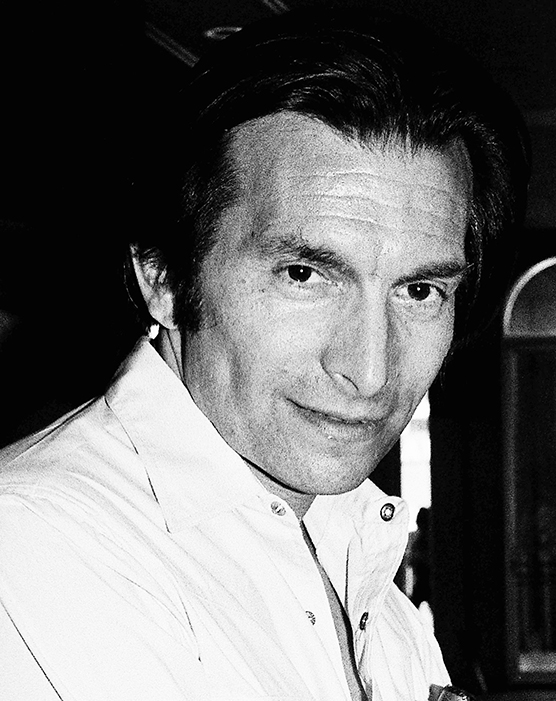
Jack Katz
1927–
Jack Katz began his career at the age of 16, doing art for Archie Comics and Fawcett’s Bulletman, and he worked as an assistant on several strips for King Features in the second half of the 1940s. In the early 1950s, he went to work as a comic book penciler for Marvel/Atlas Comics and continued into the early 1970s. He did art on many war, mystery, and romance titles, mainly for Marvel but also for Better Publications. Katz was additionally present in DC’s romance titles and in the horror magazines of Warren Publishing and Skywald in the 1970s. Then he dropped out of mainstream comics to devote 12 years to his First Kingdom project: a complex science fiction epic that tells of man’s migration into space, the ensuing galactic battles, and the great mystery of mankind’s origin before the fall of civilization. Katz completed this series with issue #24 in 1986.
Inducted 2023
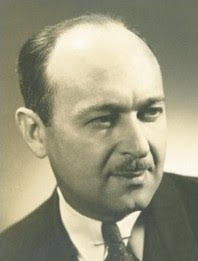
Albert Kanter
1897–1973
Albert Lewis Kanter began producing Classic Comics for Elliot Publishing Company (later the Gilberton Company) with The Three Musketeers in October 1941. Classic Comics became Classics Illustrated in 1947. Kanter believed he could use the burgeoning medium to introduce young and reluctant readers to “great literature.” In addition to Classics Illustrated, Kanter presided over its spin-offs Classics Illustrated Junior, Specials, and The World Around Us. Between 1941 and 1962, sales totaled 200 million.
Inducted 2024
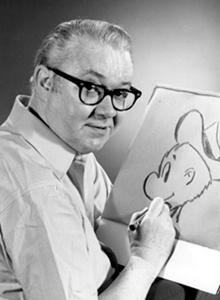
Walt Kelly
1913–1973
Walt Kelly created the denizens of the Okeefenokee swamp, including Pogo Possum, Albert the Alligator, Miz Mamselle Hepzibah, and Porkypine. His Pogo was one of the great sophisticated comics strips, imbued with great humor, sublime satire, and transcendental cartooning.
Inducted 1995
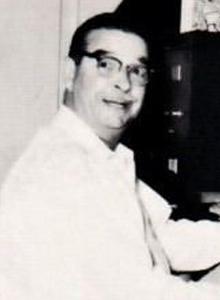
Frank King
1883–1969
With Gasoline Alley, Frank King created a neighborhood full of interesting characters who did something no other comics characters did: they aged. He was also a master of the Sunday newspaper page, utilizing it to its full potential by often creating a full-page image and dividing it into panels.
Inducted 2001
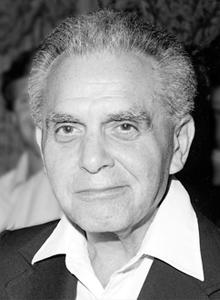
Jack Kirby
1917–1974
The “King” of the comic book artists, Jack Kirby was there from the beginning, co-creating Captain America in the Golden Age, whole genres such as romance comics in the 1940s, and the “Marvel Age of Comics” in the 1960s. He gave the distinctive look to such characters as the Fantastic Four, Thor, the Silver Surfer, the Avengers, and hundreds of other characters. In the 1970s he created the “Fourth World” for DC, giving birth to such characters as Darkseid, the Demon, and Mr. Miracle.
Inducted 1987
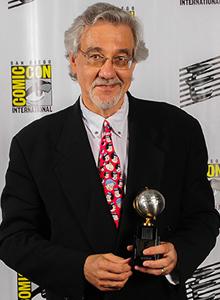
Denis Kitchen
1947–
Denis Kitchen started out as an underground cartoonist. After self-publishing his own work in 1969, he founded Kitchen Sink Press in 1970. Under the name of the Krupp Syndicate, he distributed comic strips to almost 50 underground and college newspapers. Over the course of the next few decades Kitchen Sink published such cartoonists as R. Crumb, Art Spiegelman, S. Clay Wilson, Howard Cruse, Harvey Kurtzman, Will Eisner, Al Capp, Alan Moore, Neil Gaiman, Scott McCloud, and dozens more. In 1986 Denis founded the Comic Book Legal Defense Fund, and he served as the fund’s president until his retirement in 2004.
Inducted 2015
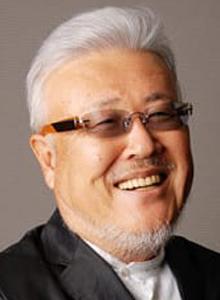
Kazuo Koike
1936–
Kazuo Koike is the co-creator and writer of such classic Japanese comics series as Lone Wolf and Cub, Samurai Executioner, and Crying Freeman. He is also an influential educator, having established the Gekikia Sonjuka, a college course that teaches manga, and mentoring a whole new generation of mangaka (comics artists).
Inducted 2004
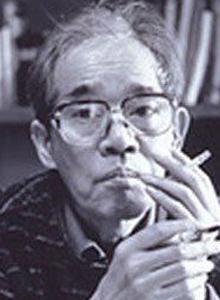
Goseki Kojima
1928–2000
Goseki Kojima was the co-creator and writer of the classic Japanese manga series Lone Wolf and Cub and Samurai Executioner. He also produced a number of graphic novels based on Akira Kurosawa’s films.
Inducted 2004
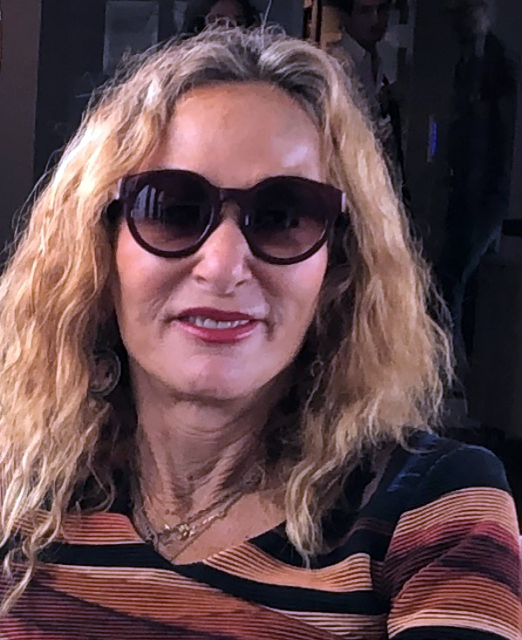
Aline Kominsky-Crumb
1948–2022
Born Aline Goldsmith in 1948, in Long Island, New York, Aline Kominsky moved to San Francisco in 1971 and fell in with the all-female collective that founded Wimmen’s Comix, and she contributed stories to the anthology’s inaugural issues. In 1975, she departed Wimmen’s Comix and with fellow former contributor Diane Noomin launched Twisted Sisters, which would eventually spawn an anthology and a limited series featuring work by many Wimmen’s Comix contributors. Kominisky married Robert Crumb in 1978, a few years after the couple began co-creating the comic Dirty Laundry, about their life together. Aline drew her own character, “the Bunch,” later collected into Love That Bunch. In 1981 she took the editorial reins of Crumb’s Weirdo anthology and remained the series’ editor through its 1993 conclusion. In 1990, the Crumbs moved to a small village in southern France, where they continued to collaborate. Aline’s 2007 memoir, Need More Love, earned her critical acclaim.
Inducted 2023
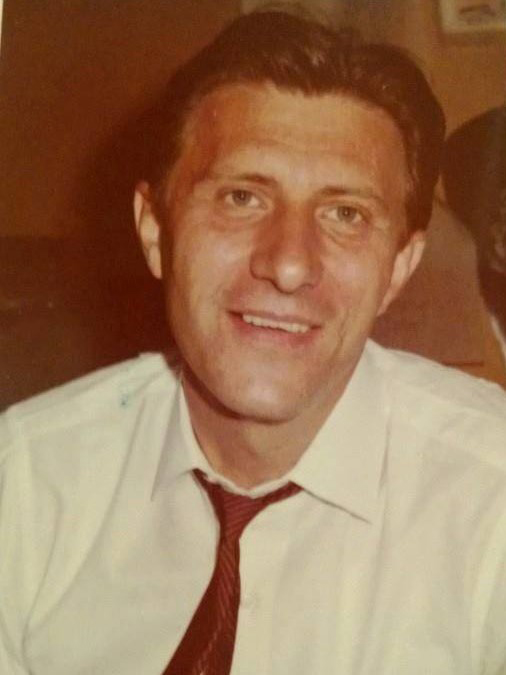
Warren Kremer
1921–2003
Warren Kremer studied at New York’s School of Industrial Arts and went straight into print services, working for pulp magazines. He gradually took on more comics work in Ace Publications, his first title being Hap Hazard. In 1948 Kremer began working for Harvey Comics, where he stayed for 35 years, creating such popular characters as Casper and Richie Rich and working on titles including Little Max, Joe Palooka, Stumbo the Giant, Hot Stuff, and Little Audrey. In the 1980s, Kremer worked for Star Comics, Marvel’s kids imprint, and contributed to titles like Top Dog, Ewoks, Royal Roy, Planet Terry, and Count Duckula.
Inducted 2024
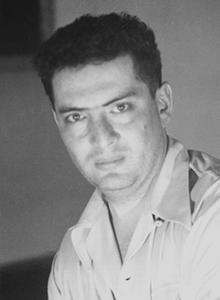
Bernard Krigstein
1919–1990
Although B. Krigstein was not the most prolific artist in the EC Comics stable, he was one of the most influential. His experiments with storytelling and the use of zip-a-tone contributed to his distinctive style. His story “The Master Race” in EC’s Impact #1 is often cited as among the top comics stories ever told. Krigstein went on from comics to become an influential painter.
Inducted 2003
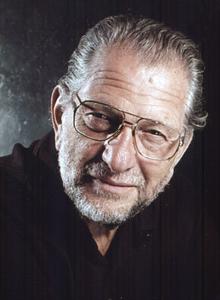
Joe Kubert
1926–2012
Having started in comics as a teenager in Will Eisner’s studio, Joe Kubert was involved professionally in comics as an artist and editor for 70 years. He is best known for his work at DC on Hawkman, Our Army at War, Sgt. Rock, Viking Prince, Enemy Ace, and Tarzan. His 1996 graphic novel Fax from Sarajevo won numerous awards. He is the founder of the Joe Kubert School in New Jersey.
Inducted 1998